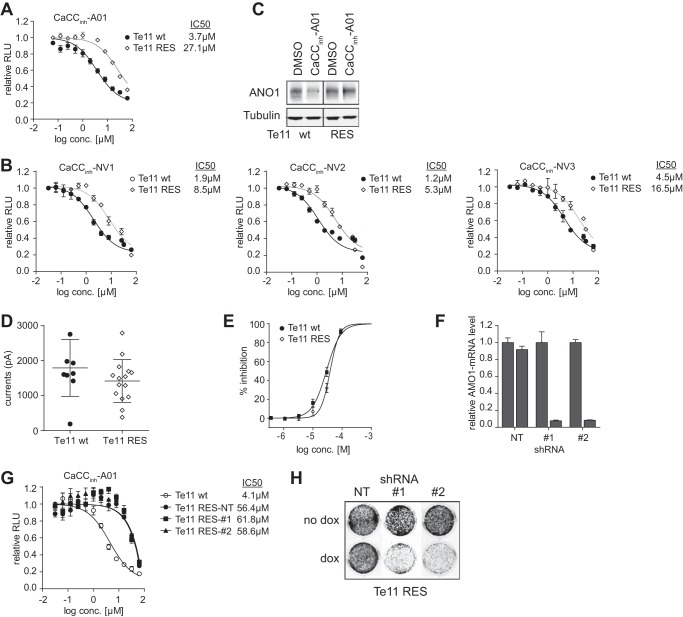FIGURE 6.
Resistance to CaCCinh-A01-promoted degradation of ANO1 rescues CaCCinh-A01-dependent inhibition of cell proliferation. A and B, effects of CaCCinh-A01 (A) and analogs (B) on proliferation of parental Te11 cells and CaCCinh-A01-resistant Te11 cell pools (mean ± S.E. (error bars), n = 4, 72-h treatment). C, effects of CaCCinh-A01 on ANO1 protein levels in parental Te11 cells and CaCCinh-A01-resistant Te11 cell pools. Representative Western blots are shown. D, ANO1-like currents in Te11 WT and RES cells as assessed using QPatch (mean ± S.E., n = 10). E, percentage of inhibition of ANO1-like currents in Te11 WT and RES cells at the indicated concentrations of CaCCinh-A01 (mean ± S.E., n = 4). F, relative mRNA-level of ANO1 of Te11-RES cells stably expressing doxycycline-inducible shRNA against ANO1 (#1 and #2) or a non-targeting control (NT) after 72-h treatment with or without doxycycline as determined by quantitative PCR. Data are normalized to the respective non-doxycycline-treated control and represent the mean ± S.E., n = 3. G, effect of CaCCinh-A01 on proliferation of parental Te11 cells and Te11-RES cells stably expressing shRNA as described in F (mean ± S.E., n = 3, 72-h treatment). H, effect of ANO1 knockdown on colony formation of Te11-RES cells. Te11-RES cells stably expressing doxycycline-inducible shRNA against ANO1 or a non-targeting control were seeded in a 24-well plate colonies in a 24-well plate are shown. RLU, relative light units.

